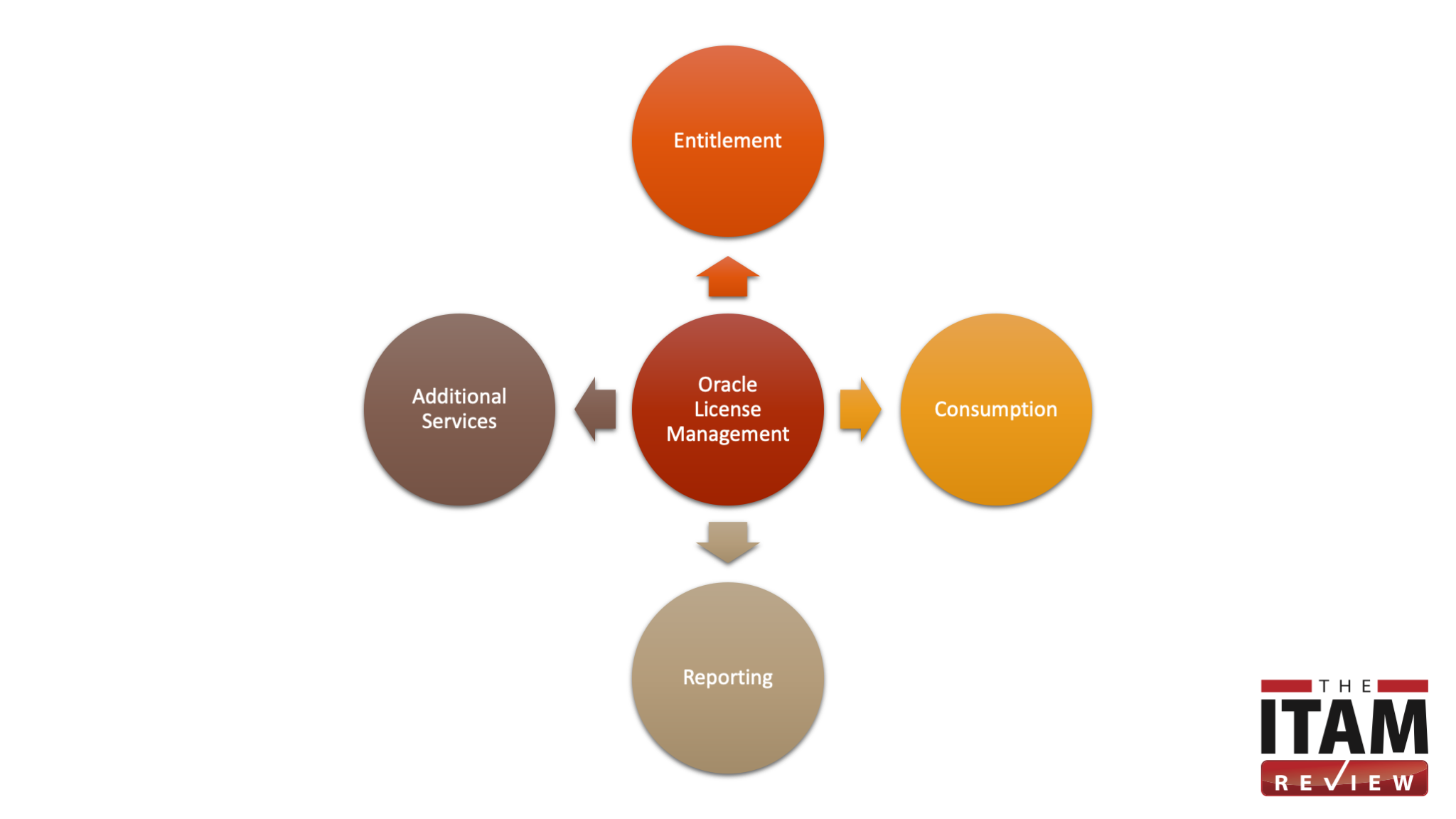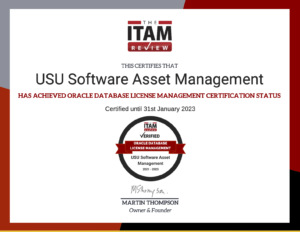Oracle Database License Management Certification Standard
This is an open, community-sourced standard for Oracle Database License Management from The ITAM Review. The purpose of this standard is to enable prospective Oracle tool buyers to determine whether a tool meets minimum standards for Oracle Database License Management. The ITAM Review certifies tools against this standard. For more on the certification process see the Appendix.

Your contributions
We welcome community participation in this standard. If you would like to suggest additions and amendments, please email support@itassetmanagement.net. Your support and expertise are vital to improving the quality of tools and services for the whole ITAM community.Scope
This standard covers Oracle Database License Management, including all Editions, Options, Packs, and deployment scenarios (e.g. On-prem, Cloud, Hybrid).The Standard
The standard is split into four sections: Entitlement, Consumption, Reporting, and Additional Services.
Entitlement
- How does your tool or service record entitlement?
- Does your tool or service provide automated import of license entitlement?
- Is it possible to identify licenses acquired via different buying programs? For example, those acquired via a ULA vs standard buying programs
- Does your tool or service record all Oracle Database license types (i.e. Edition, Options, Packs, Processer licenses, Named User licenses)?
- Does your tool record maintenance status for licenses, including expiry dates and matching support requirements?
- Does your tool enable licenses to be allocated to different corporate entities? For example, affiliates, divisions, departments, cost centres
- Does your tool track end dates for support and maintenance contracts, including ULAs?
Consumption
- Please provide a summary as to how your tool gathers consumption data
- Does your tool enable tracking of Named User license installations, with specific focus on meeting any license minimums?
- Does your tool identify where restricted use licenses may be used? (e.g. Standard Edition One, Express, Personal)
- Does your tool enable tagging/identification of test, development, or other non-production installations?
- Does your tool identify install and usage of Oracle Database Options and Packs?
- Does your tool enable license entitlements to be “pinned” to instances and installations? For example, to support management of licenses purchased by a particular entity or project
- Does your tool identify use of Oracle Database licenses in cloud environments and accurately reflect Oracle’s guidance regarding cloud deployment counting rules?
- Does your tool automatically identify installations covered by licenses included in a ULA or PULA?
- Does your tool identify physical, virtual, and cloud installations of Oracle Database products?
- Does your tool identify the underlying hardware on which the software is running?
Reporting
- Does your tool enable automated preparation of an Oracle Server Worksheet (OSW)?
- Does your tool enable a baseline for your Oracle deployment to be generated?
- Does your tool store and report trend information for your Oracle Deployment?
- Does your tool provide scenario modelling for your Oracle environment? For example, to plan a datacenter expansion or change in underlying hardware
- Does your tool provide guidance regarding optimisation of license deployment? For example, consolidation of instances into a cluster
- Does your tool provide connectivity to external BI & Reporting toolsets such as Tableau, Qlik or PowerBI?
- Does your tool automatically account for Oracle guidance regarding virtualisation technologies (e.g. hard/soft partitioning, VMWare vSphere versions)
Additional Services
- Do you offer Oracle license consultancy as a service, either direct or through a partner network?
- Does the output from this tool integrate with other products in your portfolio? For example, to provide a “single-pane-of-glass” dashboard or BI reporting?
- Does your tool enable organisations to plan for the expiry of a ULA? For example, by highlighting options to maximise deployment or determining the impact of certifying vs renewal
- How is the tool or service provided? For example, on-premises install, cloud-based, via partner network
- Is your tool verified by Oracle for License Management?
Appendix
Certification Process
Tool providers may engage with The ITAM Review to submit their tool for certification. The certification process is as follows:- Complete a survey based on the questions in this standard
- Provide a detailed product demonstration to an ITAM Review analyst proving that the tool or service meets the certification standard
- Supply two customer references willing to discuss their use of the tool with an ITAM Review analyst
Oracle Tool Verification
This License Management Standard is designed to go beyond the requirements that Oracle specify for tool verification and to provide an independent verification of all tools regardless of whether they are included in that program. Certification to this standard does not guarantee compliance with Oracle’s verification criteria.Certified Oracle License Management Tools & Services

USU Software Asset Management Certification – Oracle Database License Management
January 31, 2021
No Comments
Read More »
